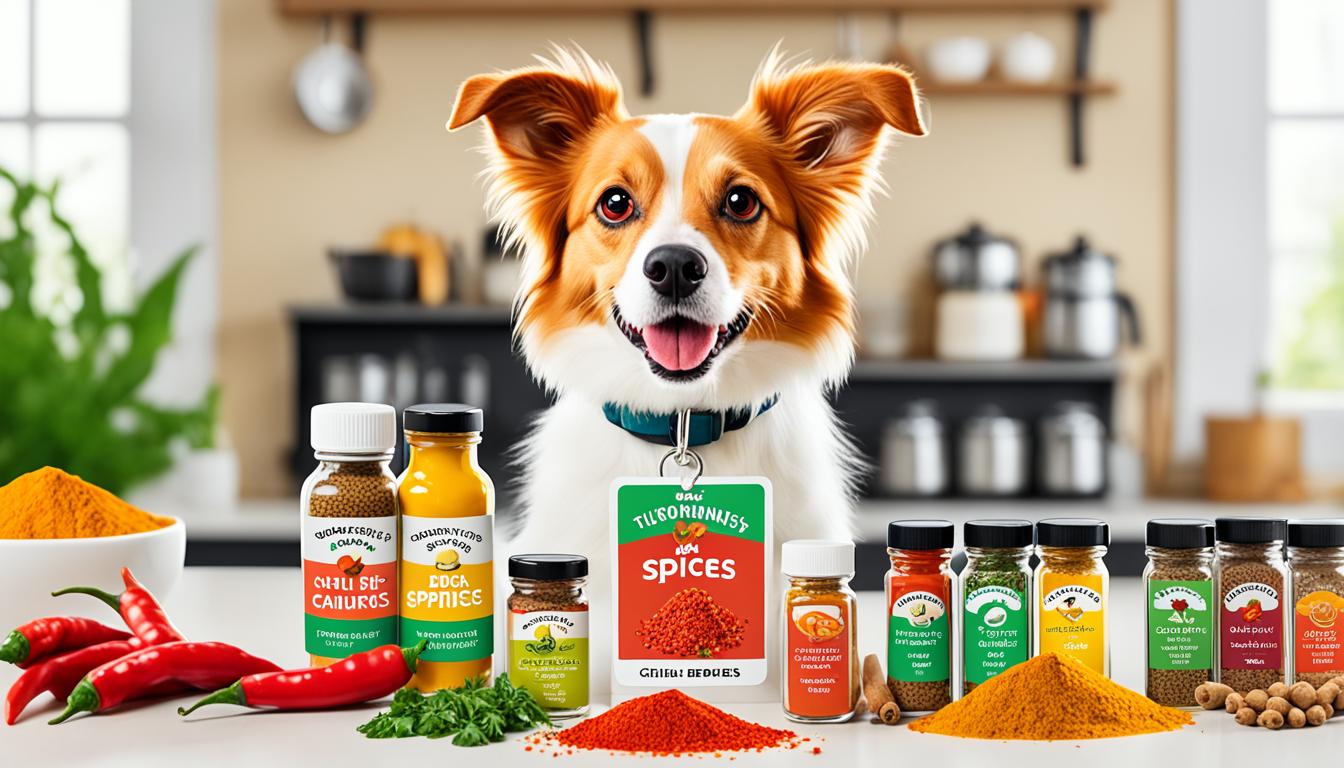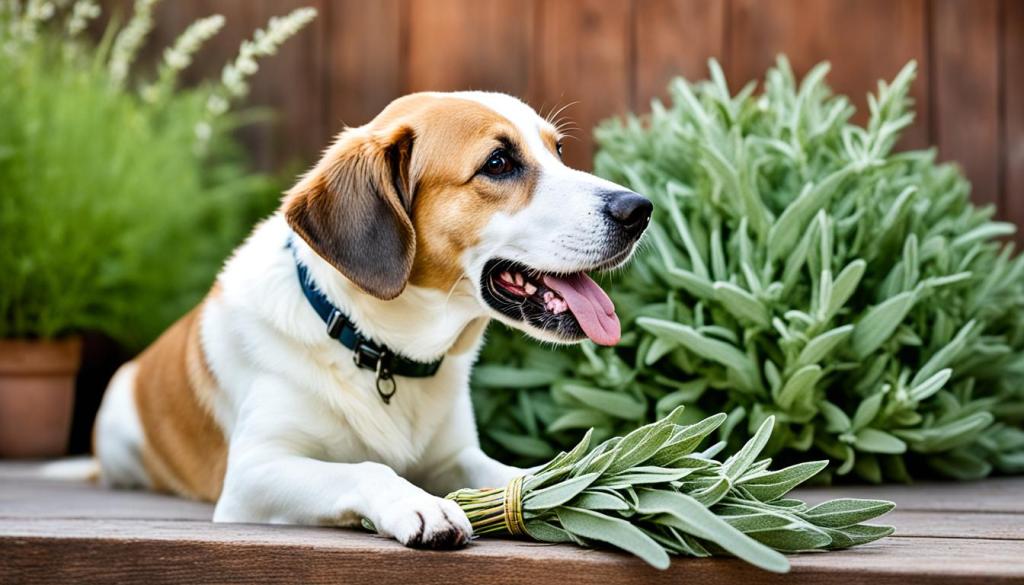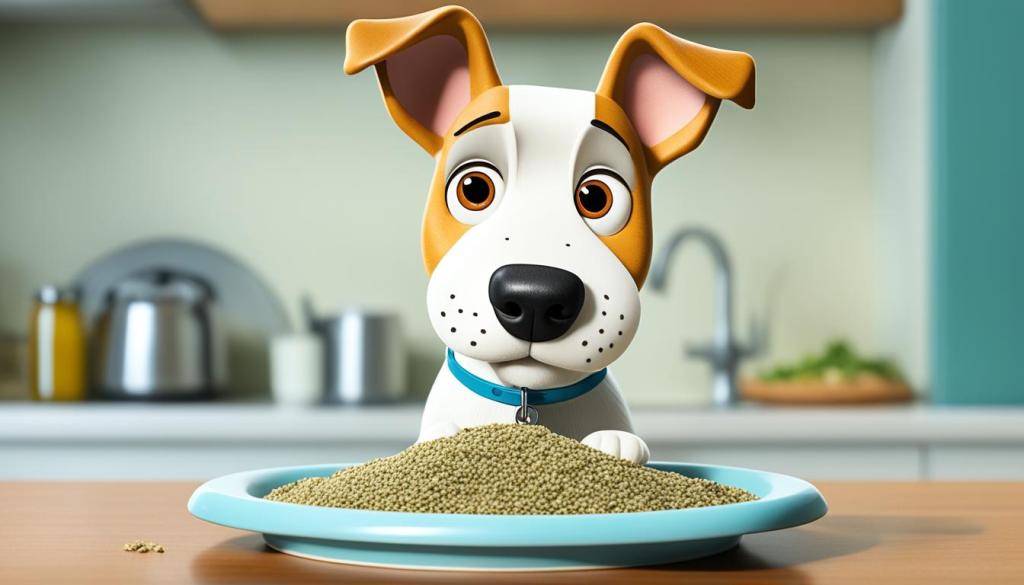As pet owners, we often consider our dogs part of the family, and naturally, we may think about sharing our meals with them. However, not all human foods are safe for canine consumption. One particular question that surfaces frequently is, can dogs eat chili? This spicy ingredient may add a kick to our dishes, but it could pose health risks to our furry friends. Understanding what spices are dog-friendly and adhering to safety tips for feeding dogs chili, should they encounter it accidentally, is crucial for preserving their well-being.
Understanding Canine Digestion and Spicy Foods
Key Takeaways
- Educate on the risks of feeding dogs chili and the importance of dog-friendly dietary choices.
- Provide insight into the canine digestive system and its tolerance to spicy foods.
- Offer actionable safety tips for feeding dogs chili in case of accidental ingestion.
- Highlight the significant differences between human and canine digestion, particularly regarding capsaicin sensitivity.
- Stress pet owners’ responsibility in recognizing and preventing adverse food reactions in dogs.
Understanding Canine Digestion and Spicy Foods
When it comes to dog tolerance for spicy food, it’s pivotal that pet owners acquaint themselves with the dietary distinctions that govern a dog’s digestive system. Unlike humans, dogs process and react to certain foods quite differently, especially those containing heat-inducing ingredients such as chili peppers.
The palate of our canine companions is not designed to enjoy or even tolerate the heat packed in spicy cuisine. This discrepancy can largely be attributed to the difference in the number of taste buds between humans and dogs. Canines generally have fewer taste buds, which suggests that their ability to discern complex flavors, like the spiciness from dogs and chili, is limited and, fundamentally, unlike ours.

Moreover, the canine digestive system is not acclimated to breaking down the capsaicin found in chili and other peppers, which is the chemical responsible for the heat sensation that humans can sometimes crave. This raises concerns about feeding spicy food to dogs and necessitates a close examination of the potential health risks associated with doing so.
Just as chocolate is known to be harmful to dogs and canines, peppers are a combination pet owners are advised to avoid to maintain their pets’ health and well-being.
Below is a comparison of sensory reception in humans versus dogs, which underlines the challenges dogs face when exposed to spicy foods:
| Sensory Aspect | Humans | Dogs |
|---|---|---|
| Number of Taste Buds | Approximately 9,000 | Approximately 1,700 |
| Reaction to Capsaicin | Varied tolerance; some enjoy the sensation | Generally intolerant; experience discomfort |
| Dietary Adaptation | Habituated to a variety of flavors, including spicy | Geared towards a primal diet; not evolved for spice |
While exploring novel foods can entice dog owners seeking to share their dining experience with their pets, it’s essential to prioritize canine health considerations over culinary experimentation. The message is clear: be mindful of your dog’s dietary needs and avoid exposing them to the risks linked with dogs and chili or spicy foods that their digestive system can’t handle.
Can Dogs Eat Chilli? The Impact on Canine Health
Chili peppers and their fiery taste, which we often enjoy in our meals, could inadvertently affect our canines’ health if shared with them. Understanding the implications of chili and canine health can make a substantial difference in maintaining your pet’s well-being.

How Capsaicin Affects Dogs
Capsaicin is the active ingredient in chili that generates heat. While some humans relish the kick it provides, it brings negligible joy and considerable distress to dogs. A dog’s body is not designed to process capsaicin, and ingesting chili can lead to unfavorable reactions. Capsaicin can irritate a dog’s gastrointestinal system, leading to risks of feeding dogs chili, which most pet owners are likely to find distressing.
Recognizing Symptoms of Chilli Ingestion in Dogs
When dogs ingest chili, they might exhibit specific symptoms that indicate their discomfort and the negative impact of this hot food on pets. The table below summarizes the common symptoms and what they could entail:
| Symptom | Possible Effect on Health |
|---|---|
| Excessive Drooling | An immediate reaction to the spiciness of chili |
| Gastrointestinal Upset | Can occur, leading to diarrhea or vomiting |
| Discomfort or Pain | A sign of digestive distress or capsaicin irritation |
| Inflamed Mucous Membranes | Indicates oral or throat irritation from spice |
| Changes in Behavior | This may include agitation, anxiety, or lethargy due to discomfort |
Long-Term Effects of Spicy Foods on Dogs
Long-term exposure to spicy foods like chili could impact a dog’s well-being. Although a single exposure might only cause temporary pain and distress, regular ingestion could lead to chronic gastrointestinal issues. Therefore, monitoring your pet for any persistent symptoms and avoiding consistently including spicy foods in their diet are critical considerations for pet owners.
Safety Precautions When Feeding Your Dog
Introducing new foods to your pet’s diet can be an adventurous activity but warrants careful steps to ensure their safety and health. As pet owners, we prioritize maintaining a diet that benefits our furry friends’ well-being, especially when experimenting with dog-friendly spices or assessing the safety tips for feeding dogs chili.
Safely Introducing New Foods to Your Dog’s Diet
When adding a new item to your dog’s meal routine, start with small quantities and monitor their response. Consulting with a veterinarian before making dietary changes is crucial to avoid unintentional harm. Remember, the gradual incorporation of any new food items, be they proteins or dog-friendly spices, enables you to assess your dog’s tolerance and acceptance while mitigating potential digestive issues.

Toxic Foods and Dog-Friendly Spices
Understanding which substances are toxic foods for dogs is just as important as knowing safe dietary options. For instance, onions, garlic, and grapes should never enter your dog’s bowl. Regarding dog-friendly spices, modest amounts of turmeric or basil can be a good start, but always opt for spices that are safe for dogs and in quantities that won’t cause irritation or health issues.
What To Do If Your Dog Eats Chilli
If your dog ingests chili, immediate action and safety tips for feeding dogs chili become necessary. Start by providing them with plenty of water to help mitigate the spiciness. Observe their behavior closely for any signs of distress, and if any adverse symptoms arise, don’t hesitate to contact your veterinarian for professional advice. A quick and proper response is crucial in ensuring your pet’s rapid recovery from any potential ill effects of eating chili.
Conclusion
This article outlines the crucial information every pet owner should know regarding whether dogs eat chili. Our exploration of canine digestion and dogs’ specific reactions to capsaicin shows that chili is a substance best kept out of reach from our furry friends. Highlighting the risks involved and the potential for discomfort and health complications, this discussion serves as a reminder of the incompatibility between chili and canine health.
As responsible pet parents, it’s vital to heed safety tips for feeding dogs health. These alternatives offer a safer route for those wishing to indulge their pets with varied and exciting meals.
In summarizing the key points presented, it’s clear that while including human foods into a dog’s diet might be attempted with the best intentions, caution is always paramount. By highlighting the adverse effects and providing a guide for safe dietary practices, we’ve underlined that the well-being of our canine companions is always the top priority. As you navigate the shared journey of life with your dog, let knowledge and attentiveness to their unique dietary needs guide your choices, keeping them happy, healthy, and well-nourished.
FAQ
Can dogs safely eat chili?
Generally, it is not recommended that dogs eat chili. Chilli contains capsaicin, which is the component that makes it spicy and can cause discomfort and irritation in a dog’s digestive system. A dog consuming chili may experience digestive upset, drooling, diarrhea, or vomiting symptoms.
What are the risks of feeding dogs chili?
Feeding dogs chili poses several risks, including gastrointestinal upset, irritation of the mouth and throat, diarrhea, vomiting, and, in severe cases, more serious digestive issues. The degree of these risks depends on the amount of chili ingested and the individual dog’s tolerance.
How does capsaicin in chili peppers affect dogs?
Capsaicin is the active compound in chili peppers that causes the sensation of heat. In dogs, capsaicin can irritate the mouth, esophagus, and stomach, resulting in symptoms like drooling, difficulty swallowing, and gastrointestinal upset.
Are there any long-term effects of feeding spicy foods to dogs?
While occasional small amounts might not cause long-term effects, regularly feeding spicy foods like chili to dogs can result in chronic digestive issues and potentially lead to food sensitivities or allergies. It’s best to avoid giving dogs chili and similar spicy foods altogether.
What should you do if your dog accidentally eats chili?
If your dog accidentally eats chili, provide fresh water to help mitigate the burning sensation. Watch for symptoms of distress and contact your veterinarian for further guidance. In cases of a significant ingestion or severe reaction, seek immediate veterinary care.
Also read a separate guide if you want to offer Egg Shells , Pistachios , Pepperoni , Bok Choy and potatoes to your dogs.


























